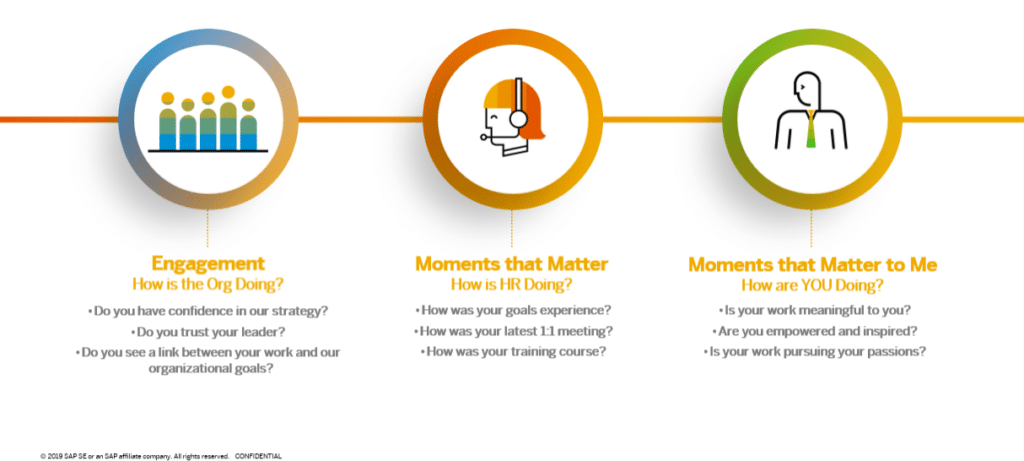Work is an experience, an opportunity to invest in ourselves and express what we bring to the world. Each of us represents an entirely unique mix of motivations, ambitions, strengths, work styles, and tendencies. These attributes represent our personal “formula” on how to be our best selves at work and they amplify our value to an organization and to each other.
But how do we put these very human attributes to work and solve the toughest business challenges? As HR leaders, we must rethink how we define employee experience and what it means when part of this formula is left out of the equation.
Experience Redefined
We are overdue for a reset on the definition of employee experience. Although the world has become increasingly individualized, employee experience is currently rooted in how the organization is doing broadly. HR leaders have become experts in evaluating engagement and leadership trust scores and yet we still don’t know where our employees experience joy at work and what might be depleting their day. Have we missed the mark? Not entirely, but the additive qualities of what makes each one of us tick, what motivates us, what we as individuals expect and want from work has been largely missed.

Experience design has historically started with persona development: defining employee wants, needs, beliefs, values, and pain points. But this generalized practice conflicts with creating individualized experiences. How do organizations focus on the unique attributes of each employee if they’re lumping them into vague categories? Employees are all truly unique and don’t want a career journey guided by a generic avatar.
When organizations match the individual to their most optimal environment it leads to positive outcomes: increased job satisfaction, organizational identification and commitment, well-being, and job performance.
This individualized approach is what we refer to as human experience management (HXM). Advancing our understanding of employee experience – the “X” in HXM – starts by engaging a broad, new set of employee attributes. It’s not just about moments that matter, but moments that matter to me. And it’s not just about who I am today but who I am becoming. We call this the whole self model. Using this unique data set – captured by assessments and preferences of employees – can lead to deeper self-awareness for the individual while also helping leaders and the organization realize greater potential across the entire workforce.
A Wave of Culture Shift
Employees expect to have a voice, to have autonomy, and to design their own work experiences. Collectively, their ambition is to find meaning, purpose, and personal connection at work. People want to use the skills they love, move dynamically between teams, and solve unique and challenging problems. They expect their organizations to know them and support their careers in individual ways. Employees are rightfully demanding the recognition of the uniqueness they bring. The next wave of diversity and inclusion should go beyond what’s on the outside to include what’s on the inside – our personality and values.
Fortunately, the movement towards individualization puts organizations on the path to this deeper understanding of who its employees are and how to support them. It will be critical to embrace these cultural shifts to build truly optimal workplace experiences. Organizations should take an iterative approach, focusing on building three key pillars of the individualized experience over time.

The Three Strategy Pillars of the Individualized Experience
Pillar #1: Know and Value Individuality
Start by deepening the understanding of what makes each individual unique through the whole self model. As Michael Stegar and Bryan Dik said in Work as Meaning: Individual and Organizational Benefits of Engaging in Meaningful Work, “Comprehension of the self in work provides the foundation for people to develop a sense of purpose and mission that both motivates their engagement and performance.” Self-exploration should include a variety of factors, including personality traits, strengths, aspirations, and mindsets.
Pillar #2: Empower Individuality
Leverage the power of people data as a foundation to create and shape experiences that are individual-led and have unique purpose and meaning. These new whole self model data elements can be used to provide transparency to employees, surface opportunities, inspire curiosity, and connect people to work with meaning. Smart organizations will align their needs to people’s passions to grow skills, workforce agility, and talent bench strength.
Pillar #3: Amplify Individuality
Drive a cultural shift that embraces individuality by creating a psychologically safe environment. By embracing the whole self model, organizations can begin to redefine their culture, tuning it to their optimal employee experience.
The untapped potential in the workplace is the difference between an average experience and one in which people can flourish. Adam Grant recently described the ultimate well-being state as ‘flourishing,’ defined as a “strong sense of meaning, mastery, and mattering to others.” It is in this triad that we each find the moments that matter to us. It is time to aim higher and dig deeper to empower the next evolution of employee experiences that connect us, as humans, and allow people to flourish. We all hope and dream for a brilliant career. It starts with every employee bringing their whole self to work, every day.
Scott Lietzke is vice president of Product Design at SAP SuccessFactors.
Julie Bartholic is vice president of Product Innovation Design at SAP SuccessFactors.
Caitlynn Sendra is EX product scientist at SAP SuccessFactors.



